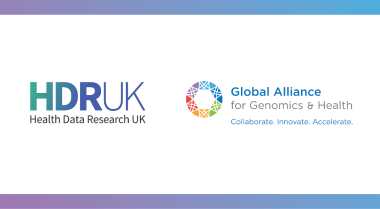The Scottish National Safe Haven – a secure research environment for health data research
9 January 2023
The Scottish National Safe Haven (NSH) is part of the UK’s growing TRE network and provides researchers with a high-powered computing service, secure analytic environment, secure file transfer and a range of analytic software. It also provides access to a wide range of anonymised national and specialised local datasets. Its staff operate to agreed principles and standards and robust governance procedures are in place to protect data confidential. We asked Carole Morris, Head of Data and Modelling Services at Public Health Scotland to tell us more about the Scottish NSH and its importance in advancing health data research.

Tell us a little about the NSH.
The aim was to establish a single entry point for the research community to request access to nationally held NHS Scotland datasets for research purposes and a secure environment where researchers could carry out analyses on pseudonymised individual level data.
The result is a secure analytical and linkage TRE and wrap around service. It’s provided via the eData Research and Innovation Service team (eDRIS) and was established in 2013 by the Information Services Division (ISD) – now both part of Public Health Scotland.
Since the 1990s the availability of health datasets has grown quickly as has the interest in data linkage. Working with National Records Scotland (NRS), Scottish Government (SG) and academia our environment has expanded beyond health to areas such as education and the population census.
The NSH was originally hosted by ATOS but later transferred to EPCC at University of Edinburgh. eDRIS works very closely with EPCC to develop greater technical capabilities for hosting, processing and analysing different types of data such as medical imaging.
Have HDR UK’s National Core Studies supported NSH development?
The maintenance and development of a TRE never stands still. It is expensive to run the infrastructure both in terms of resources and hardware. The tools and computing power needed to support research are always looking forward, and without initiatives such as HDR UK National Core Studies these would be difficult to fund and resource.
The National Core Studies programme has enabled us to bring in new datasets and revisit how data provisioning could be automated. It has invigorated collaborations and discussions across the UK sharing good practices, common hurdles and has spotlighted the importance and wealth of data available.
What data is available in the NSH and how is it accessed by researchers?
A range of key datasets are available such as hospitalisations, prescribing, COVID-19 vaccinations, census and medical imaging data. These are all searchable on the Health Data Research Innovation Gateway. Researchers can access them by applying to the data custodians for permission. For health data this is through the NHS Scotland Public Benefit and Privacy Panel (HSC PBPP). For census and government datasets this is via the Statistics Public Benefit and Privacy Panel (SPBPP).
Explore the Scottish National Safe Haven Collection on the Gateway
What is the current maturity level of the NSH, and how do you see this evolving over the coming months?
The Scottish NSH is a mature TRE. That said the needs of the research and innovation community continue to evolve so we can never sit still. The Scottish NSH will be refreshing its hardware over the next year to update the underpinning infrastructure. This is needed to continue supporting the developments happening in relation to data science tools and capabilities, cohort discovery and federated analyses across the TREs across all different data types.
Please provide some key use case examples for the NSH.
The Scottish NSH has created research-ready de-identified medical imaging data in collaboration with the University of Dundee and the University of Edinburgh. There are several early adopter projects which are using images currently available and helping develop processes and capabilities to support future analyses and linkage of images in the NSH.
Over the past two years the Scottish NSH has been working with the ISARIC Consortium to link and provide data for COVID-19 research. This has been integral to the conception and implementation of the Outbreak Data Analysis Platform (ODAP). It has grown from a single research project to the beginnings of a UK-wide data platform to tackle future outbreaks.
Is there anything else potential users of your TRE should know?
The Scottish NSH can be accessed remotely or physically via safe setting rooms in Edinburgh and other locations across Scotland. We are also in the process of joining the SafePod network through our work with ADR UK.
Read other blog posts in this series on the UK’s national Trusted Research Environment network:
- The Honest Broker Service – the Trusted Research Environment for Northern Ireland
- The Secure Research Service: The UK’s largest Trusted Research Environment (TRE)
- QResearch – high-quality data for world-leading research
- SAIL Databank & National Core Studies: Accelerating the availability and accessibility of UK health data



